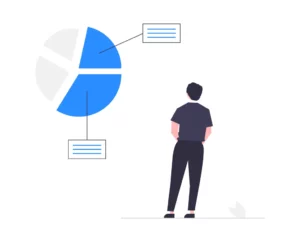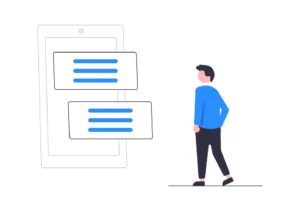By • 6 min read

Hubspot defines customer churn as “the percentage of customers that stopped using your company’s product or service during a certain time frame.” Obvious enough — the goal in any business is to keep this number as low as possible. While it is nearly impossible to keep every single customer you’ve ever gained, maintaining a low membership churn rate ensures a healthy customer base with good customer lifetime value.
We’re going to dive into ways you can reduce customer churn so you can build more recurring revenue and increase the lifetime value of your customers. But first, some quick notes on calculating churn, and what churn could potentially be costing you.
For those just starting to measure churn, we recommend you use this simple formula: take the number of customers you lost during a set period, and divide it by the number of customers you had at the beginning of that period. For example, say in an annual analysis you started with 500 customers and lost 50. Then your churn would be 10%.
An acceptable churn rate varies by industry, product type, and other variables, and there is some debate around what that threshold is. The general consensus seems to be around the 3–8% range for SaaS and subscription-based businesses.
If you want to benchmark where you should be based on your type of business, or are looking for different methods of how you can calculate churn, here’s a great guide.

Customer churn can be costly. Sure, a drop in customers is lost revenue, but the costs associated with gaining new customers can be even greater. On average, acquiring a new customer can be 5 times more expensive than retaining existing ones. Because of this, it is important that you also have a structured retention strategy to try to reduce this cost. On a grand scale, the total cost of customers switching due to poor service in the U.S. is $1.6 trillion. It’s clear the churn carries a ton of costs with it — continuing on we’ll look at how you can reduce your churn rate and some tools to make life easier.
A key fundamental in lowering churn is to understand what your customers want. Ultimately, customers will leave because they are not satisfied with your service or offering — whether it’s lack of features, cost, poor user experience, etc.
You need to be able to bridge this gap, by assessing the true purpose of why customers come to you over others. What is your competitive advantage? Is it sustainable and truly valuable? If you were in the customer’s shoes, what would win you over? This baseline sets the stage for how to engage and offer incentives to your audience.
Customer onboarding is super important to get users familiarized with your service and provide a great first impression. It can be used to highlight benefits, guide users through your product, offer tutorials or tips, and much more. You want to ensure that users are given a phenomenal experience right from the get go, which will help decrease abandonment rates and leave customers feeling like they need to come back.
Good engagement is paramount to lowering your membership churn rate, regardless of what your business does. In subscription-based environments and those where community is important, there are many ways to do this, including:
Continued engagement keeps your customers interested and can initiate conversation on what’s important to them and how you can help.
Offering incentives is another engagement strategy and can be great for customer retention. The idea is to position the offer as something that cannot be passed up, or they risk missing out. Loyalty programs are a common form of this. Often, a form of accumulated currency like points are a means to stay and earn. As well, discounts on subscriptions for longer terms can provide reason to save and stay longer. Lastly, a retention offer can be used for those in the process of cancelling. Future discounts, reduced fees or upgrade offers are common examples.
Brainstorming possible objections and obstacles can reduce the factors that lead to churn. Always be proactive and prepare a list of reasons why someone would cancel and what led up that decision. You can get some ideas from your own experience and competitor research or from engaging with your customers and assessing how satisfied they are with your service. If you are able to identify common obstacles or reasons for churn, you can work to proactively resolve issues before users leave.

A final effort to understand churn is to implement an exit survey when someone cancels. Here, it is likely that the customer has refused the retention incentives and wants to cancel regardless. An exit survey can help uncover what has led to such a certain decision, to which you can act on.
You could also try testing out winback campaigns to get users to return to your product after they’ve cancelled. A popular method is to offer users a discounted price or some other special offer to prompt them to reassess their decision to cancel. You can also communicate what the user is losing when they cancel. While winback campaigns aren’t always a home run, data shows that 45% of subscribers who receive a winback campaign read future communications and that existing customers are much more likely to convert than new ones.
PRO TIP: Be careful with how you engage “sleepers”
Ideally, you will engage subscribers early and help them develop habits to use your app or service regularly. But when this doesn’t work, some users will become “sleepers” — paying subscribers that haven’t engaged in a long time. According to Piano’s Subscription Performance Benchmark Report, sleepers have a high risk of cancelling and should only be engaged for major news events or highly appealing and compelling content. Otherwise, you run the risk of prompting them to cancel.
There are many options available that make monitoring churn relatively easy, but each has its own pros and cons.
Reducing churn is all about finding what customers want and continuing to provide irresistible value. By regularly revisiting objectives and strategies and applying the tactics mentioned above, you can reduce churn and increase recurring revenue.
Create and manage a subscription based community with LaunchPass.
Get started for freeCreate and manage a subscription based community with LaunchPass.
View pricingCreate and manage a subscription based community with LaunchPass.
Get a demo